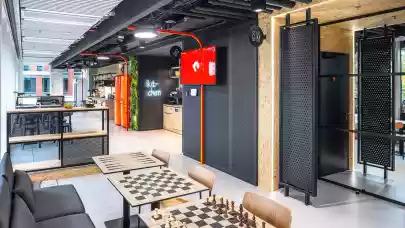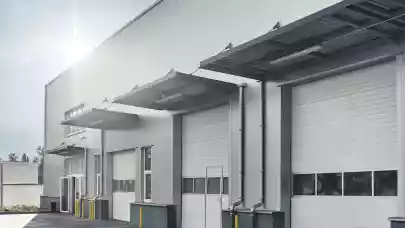
In the CEE region, Prague placed second in terms of the price of fitting out an office. With €1,159 being the average cost per square metre in Prague, it is just over half of what is standard in top cities in Germany or the UK, where costs often exceed €2,000. Compared with the last year, the prices have grown all over Europe due to inflation and other factors. The 10% increase in Prague means that office occupiers need to carefully consider their office usage and space needs when redesigning their offices. Sustainability and DE&I are also increasingly affecting fit-out requirements, reports Cushman & Wakefield in their latest analysis.
With surging inflation resulting from significant supply-demand imbalances caused by stressed supply chains, tight labour markets and the continuing Russia-Ukraine conflict, fit-out costs across Europe have risen by an average of 9% year-on-year, with high-quality fit-outs now averaging €1,537 per sqm. According to Cushman & Wakefield’s 2023 EMEA Fit Out Cost Guide, prices in the CEE region are nearly one-third lower than the European average, with Warsaw and Prague leading the regional table at ca €1,160 per sqm.
Glyn Evans, Head of Design + Build EMEA, Cushman & Wakefield: “Due to a combination of unfavourable factors, fit-out costs are getting more expensive. As the price per sqm is growing, when relocating or redesigning their offices, many occupiers are reconsidering their office space usage and looking at downsizing, enabled by adopting hybrid working models. The detailed analysis of how the company works and what needs has is necessary to be sure the company spends the money on an office fit-out wisely."
The situation is not likely to change soon, with the outlook on pricing being mixed. Although supply chain stress continues to be resolved, there are still bottlenecks for specific products, mainly electronics, and labour costs remain high. Inflation in the euro area is forecast at 6.2% in 2023 then it should slow to 2.7% in 2024. These factors mean that input costs will remain elevated in the near term, probably resulting in construction contractors remaining risk-averse and including greater safety provisions to mitigate the current volatile conditions.
However, on the opposite side of the ledger, the economic slowdown has resulted in a more cautious approach to capital expenditure by occupiers, which together with the current trend of generally downsizing office footprints, means the size of the market has shrunk. In turn, this is leading to increased competition to win projects and is therefore placing downward pressure on tender pricing as margins are shaved further.
The workplace of today: Hybrid, diverse and sustainable
Most, if not all, major companies have adopted some form of a hybrid working model, often also in response to employee expectations of increased workplace flexibility. Other trends are also gaining in importance, headed by ESG and DE&I.
Glyn Evans, Head of Design + Build EMEA, Cushman & Wakefield: “Sustainability targets are increasingly becoming the norm, as are more visible practices to foster and promote diversity, equity, and inclusion. The role of technology has never been more important – both as an enabler of change and as a means of measuring the impacts of change. Together, these factors mean that the fitting-out of office space goes beyond how the space looks, to include how the space contributes to a company’s financial, social, and sustainability goals whilst also reflecting corporate brand and culture.”
Workplace strategy & change management
To answer the needs for both collaboration and focused work, the office needs to remain a dynamic environment. Multi-functional spaces are created by using modular and flexible furniture to allow a variety of layout configurations that best fit the different activities, and by implementing digital booking systems to secure collaborative or quiet spaces. The move to hybrid, or flexible, working necessitates a quantum shift in how work is done, not just where it is done. Occupiers at the leading edge are making this shift through updated workplace policies, innovative office design, and thoughtful change management programmes.
Sustainability
For many landlords, the focus has been on ensuring their assets are aligned with legislative requirements and increasingly that they meet the expectations of occupiers. Failure to do so risks obsolescence as half of the building stock across Europe is over thirty years old and just 14% have been built or substantially modernized in the last ten years.
Glyn Evans, Head of Design + Build EMEA, Cushman & Wakefield: “Our recent report ‘Obsolescence = Opportunity: The next evolution of office space in Europe’, warns that 76% of European office stock faces obsolescence by 2030 as a combination of changing work patterns, occupier demand, increasing legislative action from European governments around minimum sustainability standards, as well as an uncertain economic backdrop, sees stock misalign with demand.”
Office fit-outs are a key element, as many as 30-40 of them taking place over the life of an office building, and their environmental cost outweighs the embodied carbon in the building. A return to the reduce-reuse-recycle basic principles should prevail. To name just a few possible steps: maximising natural light to minimise artificial lighting, using environmentally friendly materials for flooring, partitioning and furniture, introducing biophilia into the design, sourcing renewable energy providers, and adopting waste reduction measures. Intelligent space booking systems and sensors can also close off unrequired space to minimise HVAC and lighting requirements in low occupancy. And deconstruction should be kept front of mind during fit-out construction as most material is down-cycled at the end of a fit-out’s lifecycle rather than recycled. This points to using bio-composite materials as well as identifying take-back programmes to reintroduce expired products back into the manufacturing cycle.
Procurement
Procurement has come increasingly under the spotlight since the onset of the COVID-19 pandemic, this is primarily driven by increased supply chain stress, causing not only project timing delays through bottlenecks, but also budgetary pressures associated with scarcity of products and higher transport costs. Accordingly, there is growing financial pressure to target shorter supply chains, but the gains can extend well beyond financial benefit.
Specifically, re-evaluating supply chains can feed directly into achieving ESG goals by sourcing environmentally friendly materials closer to home, ideally within an environmentally efficient supply chain, which can also assist with reducing Scope 3 emissions. It also includes the notion of “social procurement” – using buying power to produce social benefits over and above the value of the goods or service, starting with “buying local”, to procuring goods and services from marginalised groups or social benefit suppliers.
Technology
Technology now runs through all aspects of office fit-outs, causing an increase in the proportion of their budgets allocated to technology. On-site demands include the need for space booking systems, as well as the latest tools to facilitate collaboration and connection. The closer focus on DE&I also means creating an equality of experience no matter how, where, or when employees choose to work. Alongside this, the growing proportion of Generation Z in the workplace, who are "digital natives”, will increasingly expect effortless connectivity.
Technology can also contribute to sustainability goals through smart systems, sensors and energy-efficient appliances. A shift to cloud computing now allows for smaller server rooms, which therefore requires not only less space but also less cooling. Similarly, asset sensors can alert facilities managers when preventative maintenance is due to help prevent system failures. The key message here is that technology is not only an enabler of change, but also a way of measuring the impacts of that change and should be deployed as such.
Glyn Evans, Head of Design + Build EMEA, Cushman & Wakefield: “These days, office fit-out is not just a matter of design. It incorporates various factors ranging from employees’ well-being – including accommodating their need for flexibility at work, to DE&I, to sustainability and environmental impact, to the company’s operational and financial efficiency. Corporations are taking huge strides in advancing workplace strategies and the importance now placed on sustainability and DE&I criteria cannot be understated as more and more firms pivot towards accountable goals in this area.
At Cushman & Wakefield, we have recently applied all these principles in our own Prague office’s reconstruction: we downsized our space by 20%, introduced desk-sharing, increased the number of spaces for focused work as well as for collaboration (both face-to-face and online), upgraded AV/IT equipment. During the reconstruction and beyond, we apply sustainability and DE&I principles, which are our company’s priorities – both in the way how we operate and in our service offering to clients – with the joint aim of running the real estate business in line with new sustainability demands, trends and regulations.”



